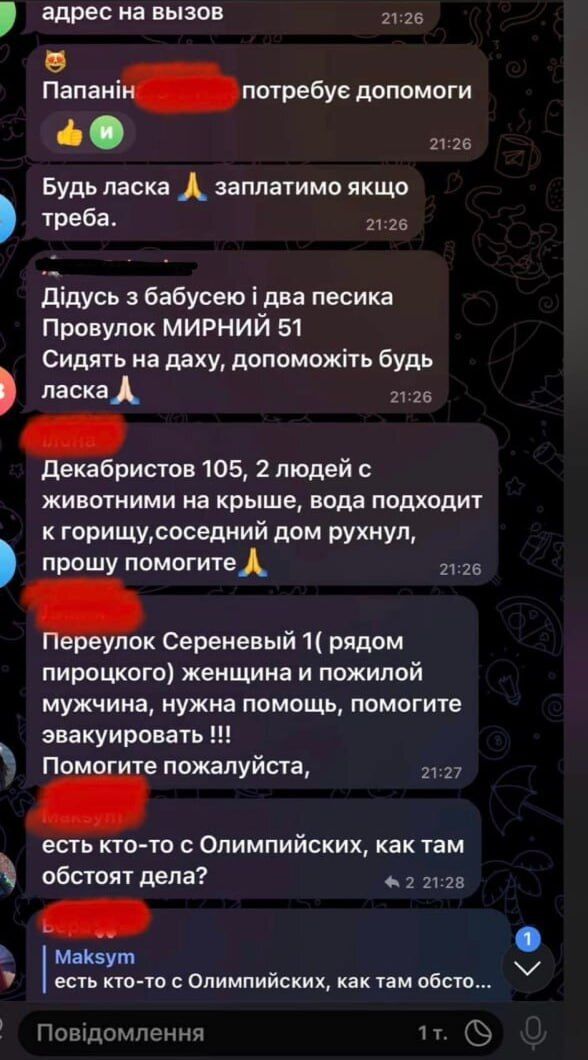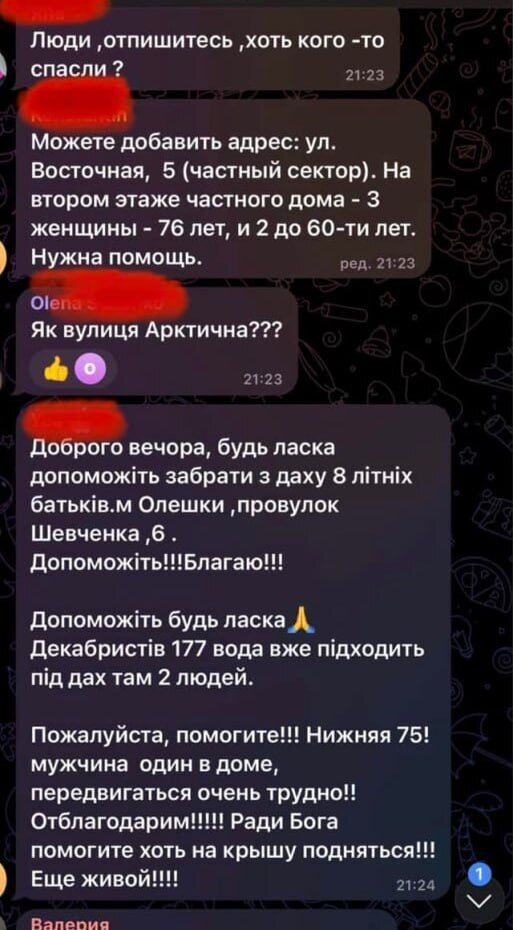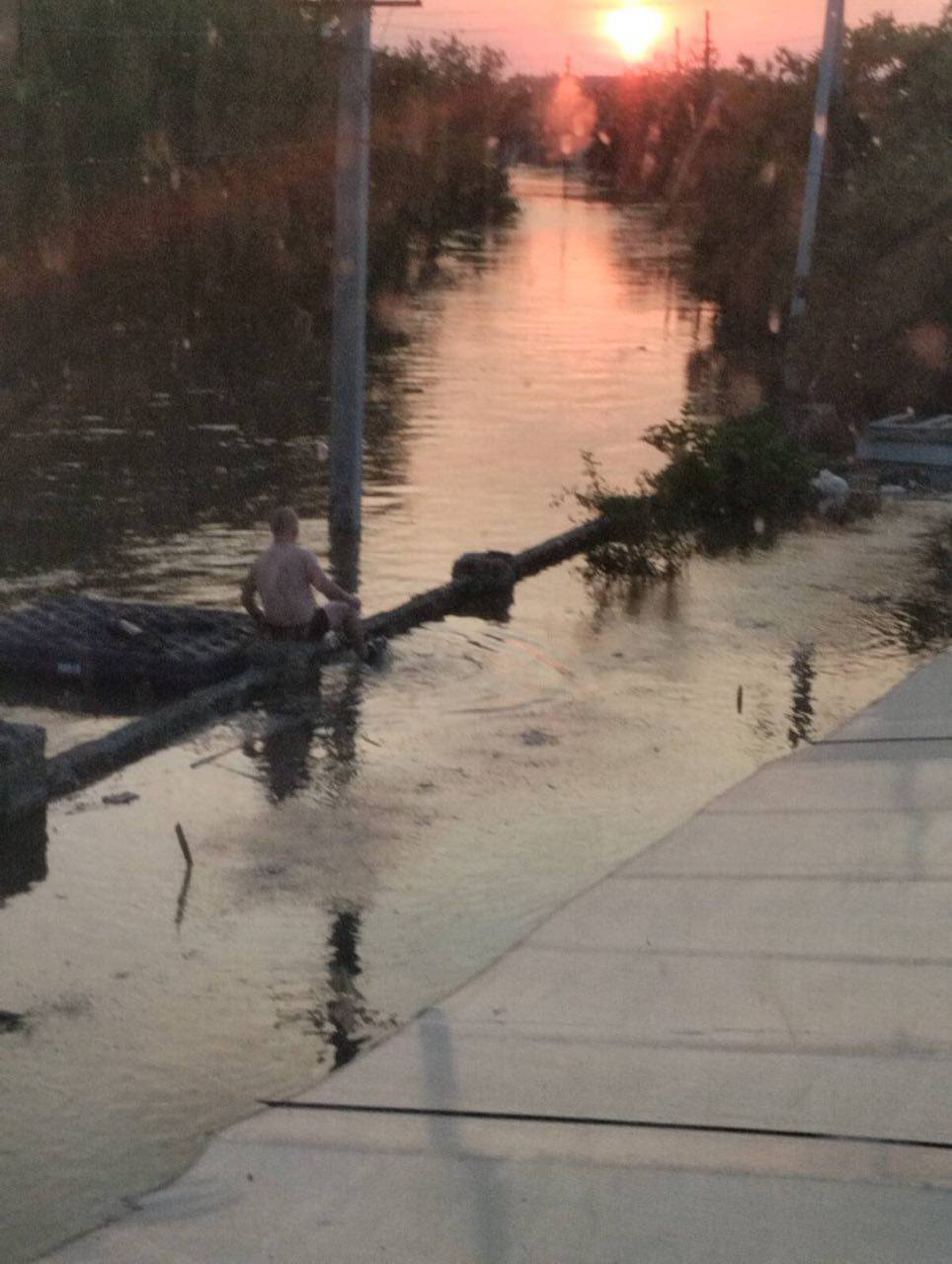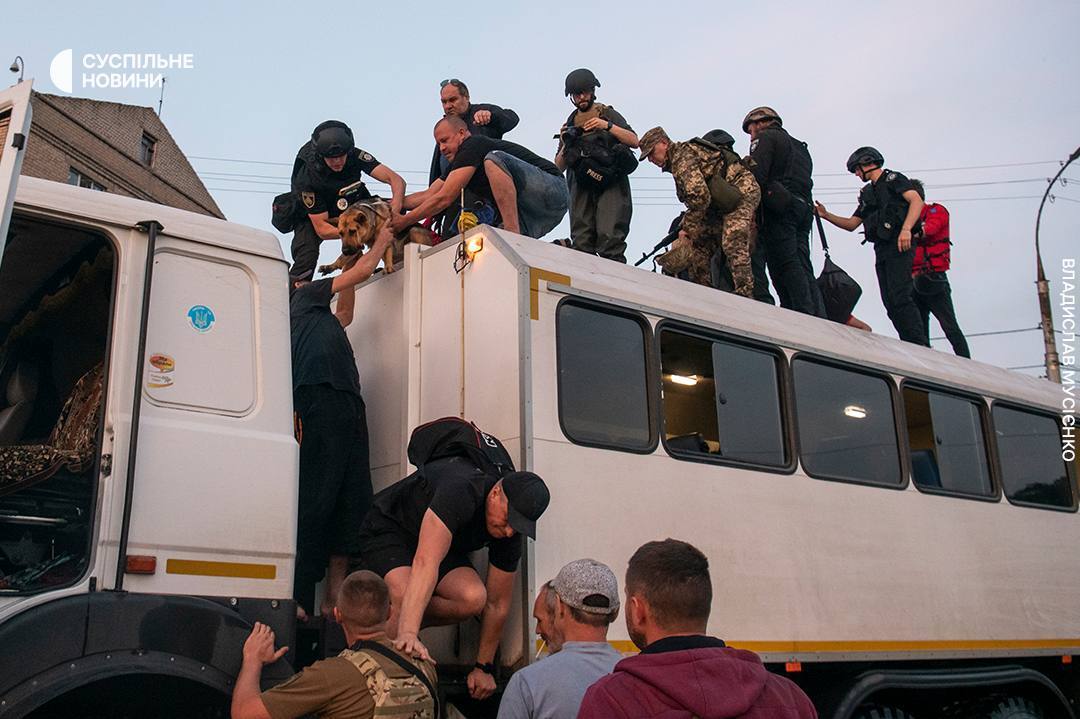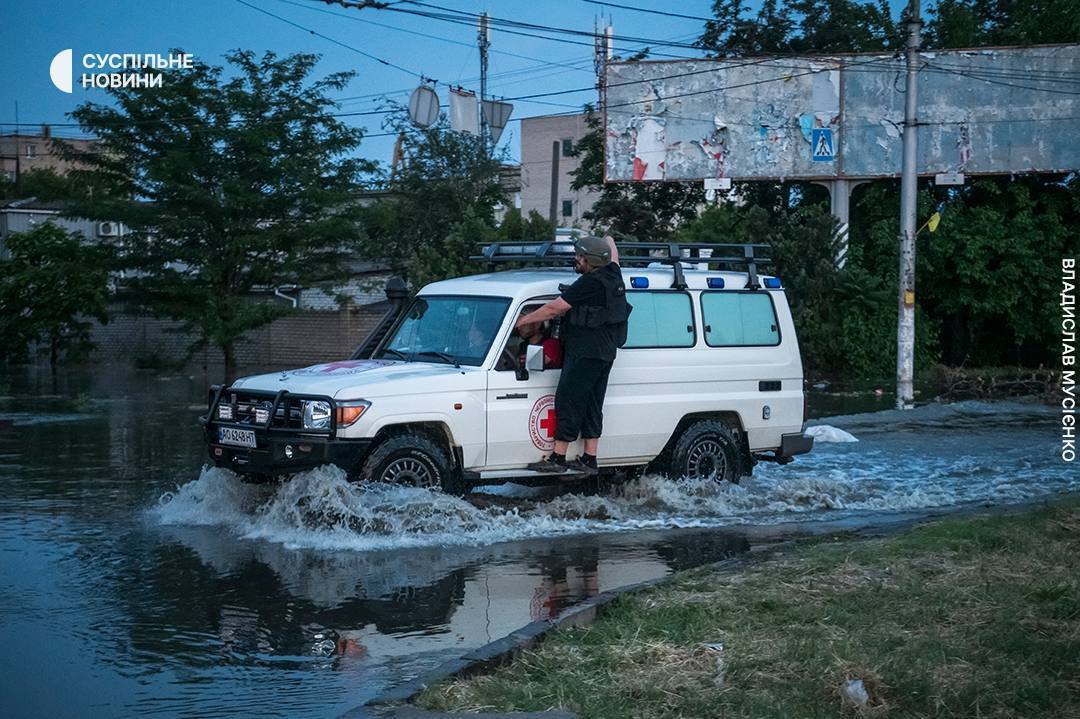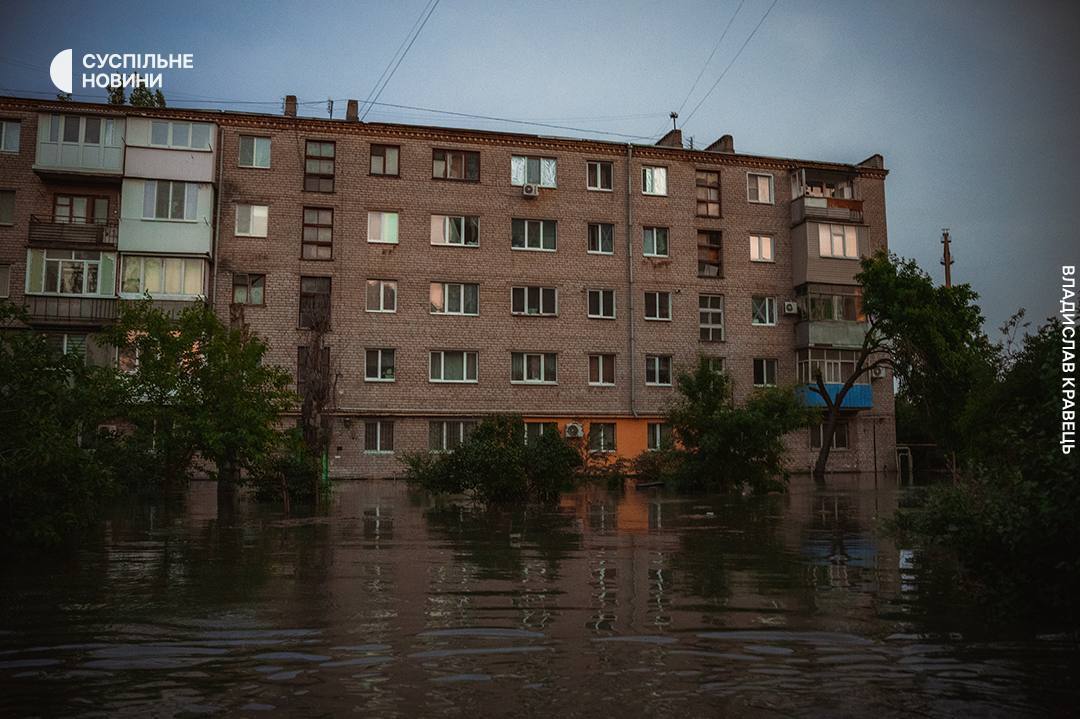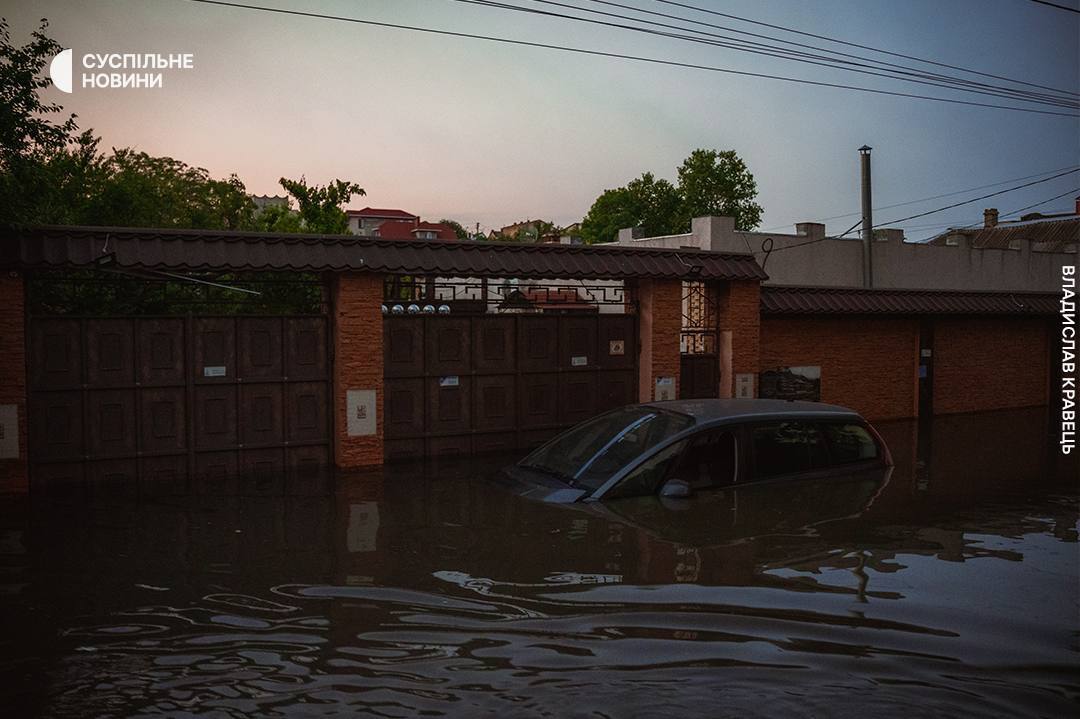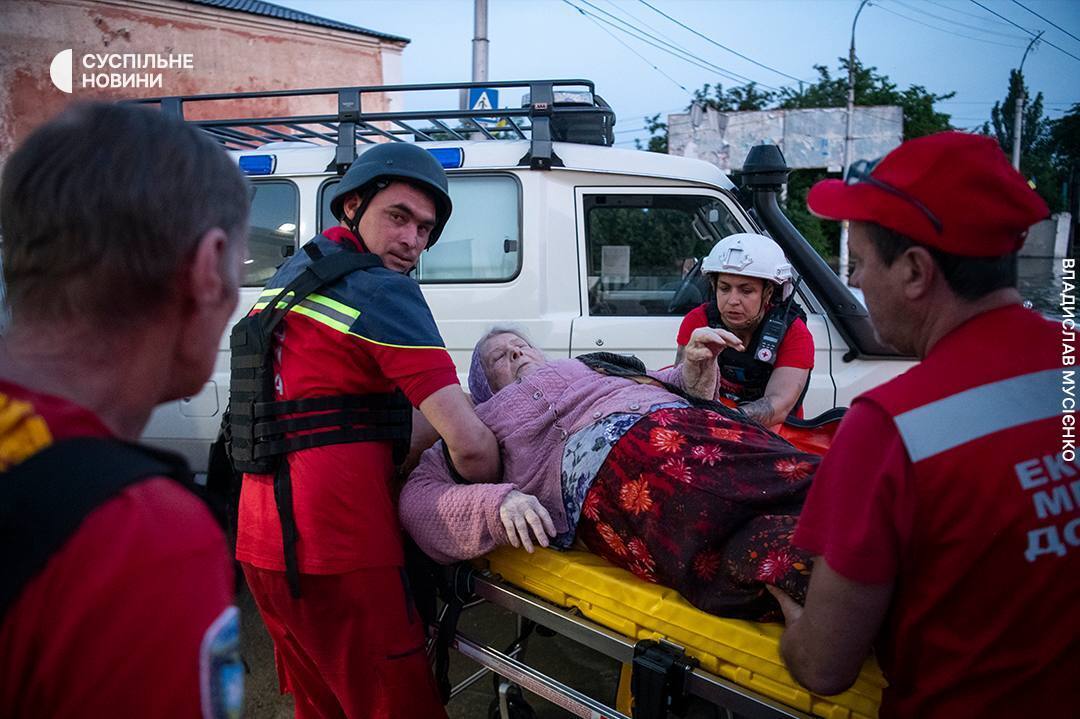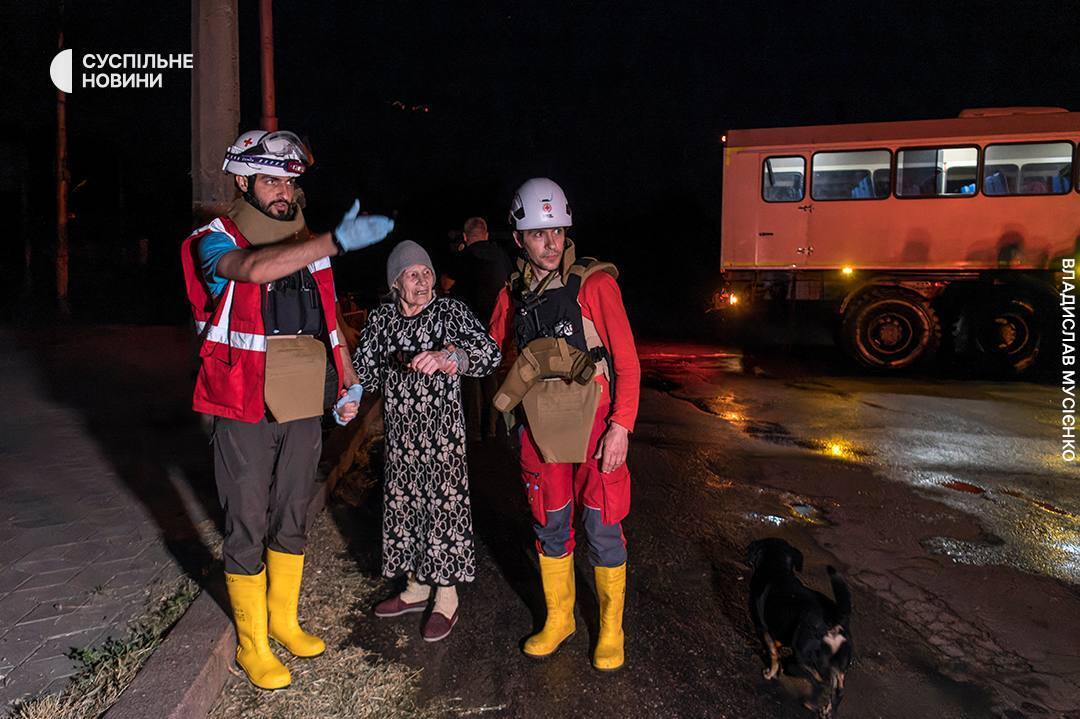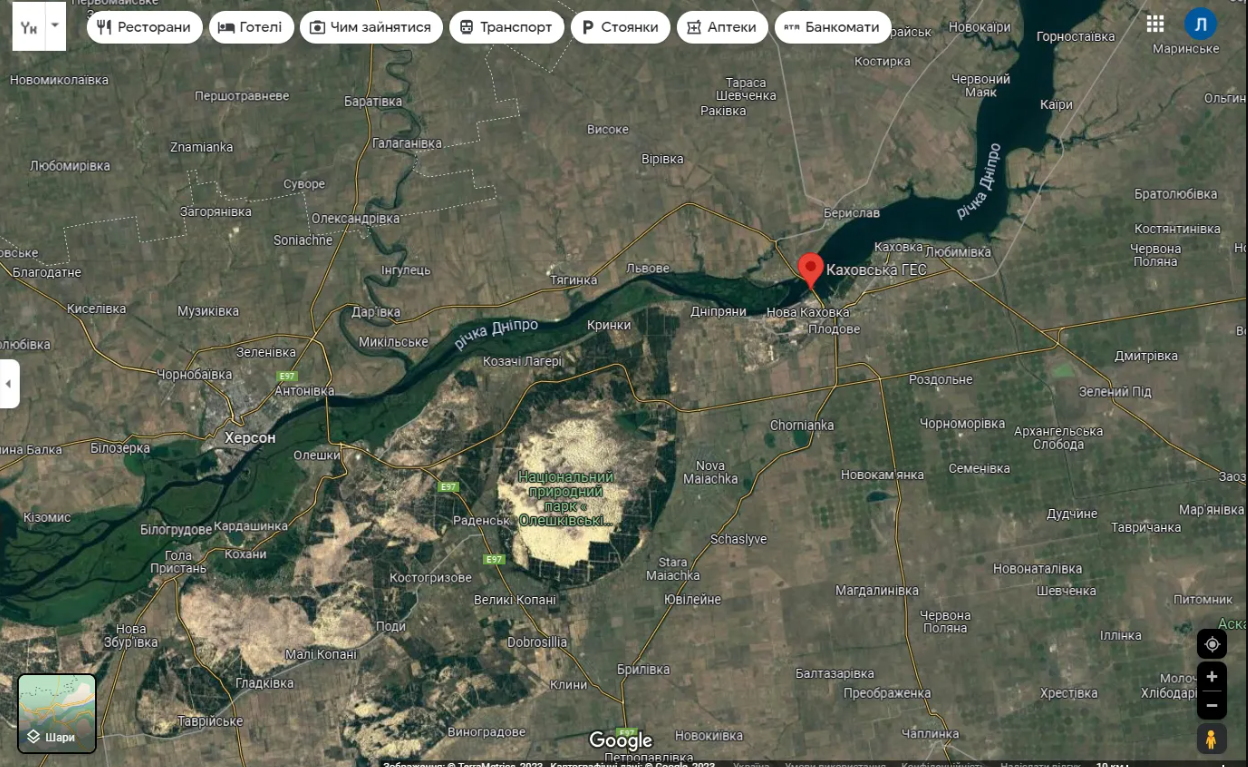War in Ukraine
In Oleshki, water reaches the roofs of houses, people beg for help: what happens after the occupants blow up the Kakhovka hydroelectric power plant (updated)
On the night of June 6, the explosion of the Kakhovka hydroelectric plant by Russian occupants affected dozens of settlements on both the liberated right bank and the temporarily occupied left bank of the Kherson region. On the right bank, Kherson and coastal settlements suffered heavily, while towns and villages where the occupants are in control suffered even more.
In particular, the situation in temporarily occupied Aleshki is critical: there people slept on the roofs of buildings and waited in vain for help. OBOZREVATEL monitors what is happening on both banks of Kherson after the Russian terrorist attack, as well as the evacuation of the population.
Occupied Kherson Region: Oleshki
As reported by Kherson's publishers, the chat room of the occupied town of Oleshki in Kherson Oblast is overflowing with pleas for help and rescue.
Judging by the photos appearing online, many residents of Oleshki were forced to spend the night on the roofs of houses.
"In Oleshki, the water in the coastal area reaches the roofs of houses, People are hysterical, calling relatives and saying goodbye. Many old people are on the roofs, there are no boats. There's no way to get there. We are looking for a way to help. The horror is that people may not survive the night, especially young children," one of Kherson's Telegram channels posted messages from locals.
According to "Public", in some areas of the occupied Oleshki, water reached the roofs of two-story houses. The newspaper quotes a story by a local resident, Xenia, who was looking for a boat to rescue her friend's family. When the women last communicated by telephone, their friend's family, two adults and two children, were sitting on the roof of their house. Then communication with them disappeared.
"Despite the fact that the occupation administration publishes rescue hotline numbers, people have no way to call Russian numbers from Ukrainian SIM cards. At the same time, Russian cell phone service in Aleshki has not worked for several months. At the moment only the Vodafone mobile network works in Aleshki, but it is also unstable," journalists tell accounts of local residents.
People are trying to save themselves on their own, but the Russian occupants are preventing them from doing so.
"My father, mother, grandmother, aunt and brother live in Aleshki. An hour ago I talked to my father, now there is no connection. My mom found out from the news that Aleshki might flood. Their house is in a safer area and it didn't flood. But my grandmother's is closer to the marshes, in the lowlands. At about 3 p.m. the water started rising in her vegetable garden. My father drove out to pick up my grandmother in his car, but he was stopped by the Russians on the road and had his car towed away. My father returned home for another car, but he couldn't get to my grandmother anymore because the road was flooded with water... When I talked to my mom, she said the situation was under control, they were planning to sleep in the attic tonight. They planned to leave, but the road is flooded and the Russians won't let them go anywhere. And in order to take the grandmother out, we have to wait until the water subsides. There's no other option," Yulia told the newspaper.
She added that there is no rescue service in Oleshki, the nearest rescue station is in Genichesk. According to her, the center of the city, as well as Hutorishche and the Kulandra district, suffered the most in the locality.
In the meantime, the occupation "administration" of Oleshki claims that this village has the most difficult situation with flooding of all the settlements on the left bank of the Dnieper and reports on the allegedly ongoing temporary evacuation of people. The people themselves refute these claims. Calling relatives in the liberated territory of Ukraine, they confess: they can only count on themselves, relatives, friends and neighbors.
"Everyone needs help there, because the local authorities don't give a damn about people at all. My parents are in Oleshki, and they can't leave their house because half of their house is already flooded. We need help with the boats, not just talk! - Another of my interlocutors told the newspaper.
Kherson
Kherson also suffered from a terrorist attack by the Russian Federation. For example, the Shumensky neighborhood in the western part of the city turned into a lake.
But the Korabel neighborhood (often called "Ostrov" by Kherson residents) suffered the most in the regional center after the explosion of the Kakhovskaya HPP. Already around lunch time on June 6 it became more difficult to evacuate people from there due to a rapid rise in the water level.
To save people, special vehicles several meters high arrived in the neighborhood and took citizens out of their cars and roofs. Some locals refused to be evacuated and stayed on the island.
In the evacuation of people from the flooded area in the Kherson region involved military officers of the State Special Transport Service of the Ministry of Defense. They provide assistance to local residents and transport people to safe places.
The corresponding video of the Ministry of Defense published in Facebook, reports Ukrinform.
"The military of the State Special Transport Service of the Ministry of Defense of Ukraine helps citizens in Kherson get to safe places," reads the message that accompanies the video.
Meanwhile, videos of flooded houses collapsing are appearing online. The footage reportedly shows Kherson.
Flooded on the right bank of Kherson and other settlements. For example, Tyaginka in Berislavsk district and Krynki in Kherson district look like this. Some of the houses in these settlements have gone under water completely, in some of them only the tops of the roofs can be seen over the water.
Consequences of the Russian terrorist attack on the Kakhovka HPP: What the UN says
During an urgent meeting of the UN Security Council convened the day before at the initiative of Ukraine, United Nations Deputy Secretary General Martin Griffiths noted that the scale of the disaster caused by the explosion of the Kakhovka hydroelectric dam on June 6 will become clear in the coming days. However, there is no doubt that it will dramatically affect the lives of many thousands of people.
At least 40 settlements in the Kherson region are currently flooded, but this number will grow. The consequences of the crash will be especially serious for the Russian-occupied territories, where the invaders do not allow representatives of humanitarian missions.
"The UN and humanitarian organizations are taking emergency measures to help more than 16,000 victims. We are talking about providing the population with drinking water, financial assistance and psychosocial support. Power generators, water filtration equipment and transport will be provided to the affected areas," Griffiths noted.
In addition, multidisciplinary mobile brigades have been deployed at railway and bus stations throughout Kherson Oblast to assist those in need of evacuation.
The UN deputy secretary general recalled that the destroyed dam played a key role in supplying water to agricultural land in southern Kherson and on the Crimean peninsula. Its destruction would hit agriculture and food production.
"Prolonged flooding will disrupt agricultural activities, harm livestock and fisheries, and have widespread long-term consequences. This is a serious blow to the food production sector," he said.
The UN also predicts that the destruction of the dam could have a negative impact on electricity production, and any uncontrolled drop in the reservoir level could hit the safety of the Zaporizhzhia nuclear power plant.
Griffiths also expressed concern about water moving mines and other explosive objects.
Recall that in the morning of June 6, it became known that the occupants blew up the Kakhovka hydroelectric power plant, under the threat of flooding - up to 80 settlements.
Ukrainian President Volodymyr Zelensky called the Russian attack the largest man-made eco-catastrophe in Europe in decades.
The evacuation of the population of Kherson, which is in the flood zone, was announced.
According to Ukrenergo, the Kakhovka hydroelectric power plant is completely destroyed and cannot be restored. They warned about the threat of the ZNPP, because water from the Kakhovka reservoir was used to cool the reactors, and after the terrorist attack, the water level in the reservoir has been rapidly declining.
The world condemned the aggressor state for what it had done. A number of Western leaders, one after another, held Russia responsible for the terrible terrorist attack and noted that "terrorists do not stop if they are not stopped.
Russia itself cynically blamed Ukraine for the terrorist attack. Russian presidential spokesman Dmitry Peskov said that Ukraine needed to destroy its own hydroelectric power plant and wreak a disaster comparable to the Chernobyl accident in order to deprive occupied Crimea of water and because of an alleged "failed counterattack."
Only verified information in our Telegram channel Obozrevatel and in Viber . Do not be fooled by fakes!







